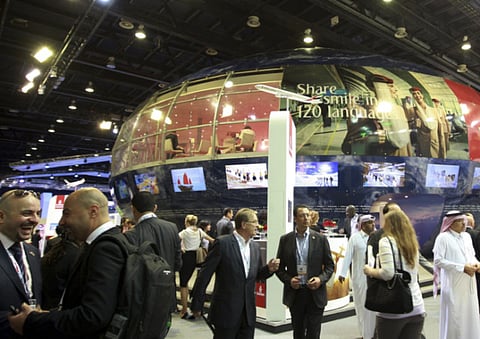More travel options at Arabian Travel Market
This year’s show will have a bigger variety of travel options

From Kyoto to Kashmir, some less-visited destinations will showcase products at Arabian Travel Market (ATM), targeting high-spending Middle Eastern travellers who are looking for something different.
Now in its 21st year, the trade-only show is 7 per cent bigger than last year and is spread over 23,500 square metres with 66 national pavilions and more than 2,500 exhibitors, says Mark Walsh, Portfolio Director, Reed Travel Exhibitions, which organises the event. “There are several new destinations that we are welcoming for the first time including Taiwan, the Caribbean and Slovenia. We are also welcoming the Kyoto Convention Bureau, Jammu, Kashmir, Muriya Tourism Development in Oman, Kish Island Free Zone, Kuwait Airways and IMG Worlds of Adventures,” he tells GN Focus.
The event takes place from today until Thursday at the Dubai International Convention and Exhibition Centre.
As the economy picks up, exhibitors are hoping regional consumers will raise travel spending. Middle Eastern travellers have the world’s highest per capita luxury spending, according to management consulting firm Bain and Company. ATM statistics show that GCC nationals spend 260 per cent more on airfare than other nationalities, with between 40 and 60 per cent booking business class travel, 430 per cent more on accommodation and 558 per cent more on dining.
Luxury and economy
To reach this market, ATM is introducing several new features including the first specialised annual theme, says Walsh. “For 2014, this will be a dedicated spotlight on luxury, something that holds particular relevance for the region. This will encompass several luxury-specific seminars as well as hosted buyers representing this valuable market segment plus high-end exhibitors including well-known hospitality brands.”
For those who prefer budget holidays, ideas are also being displayed. One trend that is on the rise is mid-range accommodation. “There is a huge demand in the UAE, which predominantly targets a luxury-based market, for more mid-range properties,” he says. “Hotel and especially hotel apartment groups such as Coral, TI’ME, and Rotana are offering accommodation that may not come with a five-star rating, but neither do they come with the same price tag.”
The trend is being driven by the growing GCC market. “Typically, these consumers travel in groups. They enjoy the flexibility of interconnecting rooms and self-catering. Many prefer an urban environment, close to cafes, shopping malls and markets. With Dubai targeting 20 million visitors by 2020, this could be one of the segments that gets it over the line,” he adds.
With a stable government and economy, the UAE has seen tourism growth in the past two years. In the first nine months of 2013, government figures show that Dubai hotels welcomed 7.9 million visitors, an increase of almost 10 per cent. This is mainly a result of longer average stays, with visitors spending $4.2 billion (about Dh15.4 billion) in total, or 17 per cent more than in 2012. Last year, Abu Dhabi experienced its best year yet in terms of guest arrivals, guest nights, length of stay and revenue. Official figures show 2.8 million guests checked into the emirate’s 150 hotels and hotel apartments, 18 per cent over 2012. This delivered 8.8 million guest nights — a 26 per cent uplift on 2012 — with revenue climbing 18 per cent to Dh5.48 billion.
The main influx of visitors last year came from Saudi Arabia, India and the UK. The sector should show further growth in the lead up to Expo 2020, when an expected 25 million visitors will visit the UAE in just six months.
This optimism is tempered elsewhere, however, says Walsh. “Egypt is still suffering from political tension and has seen visitor numbers decline from 15 million in 2010 to nine million in 2013. It is the market suppliers should watch with caution,” he explains.
Technology in focus
Over the week, agents and travel suppliers will also be introduced to new technology. “We have seen major growth in mobile technology,” says Walsh. “This area of expansion is almost revolutionising booking services, allowing potential customers the convenience of booking while on the move.”
He says the trend is making rounds with hotel websites being modified to fit mobile screens. Most recently, Millennium & Copthorne Hotels and Resorts reformatted its websites to achieve this aim.
Technology is also having an impact elsewhere. As internet access get quicker, smarter and cheaper, Walsh adds, it is only a matter of time before Wi-Fi in the region follows the US and becomes free of charge for guests in most hotels.
Sign up for the Daily Briefing
Get the latest news and updates straight to your inbox



